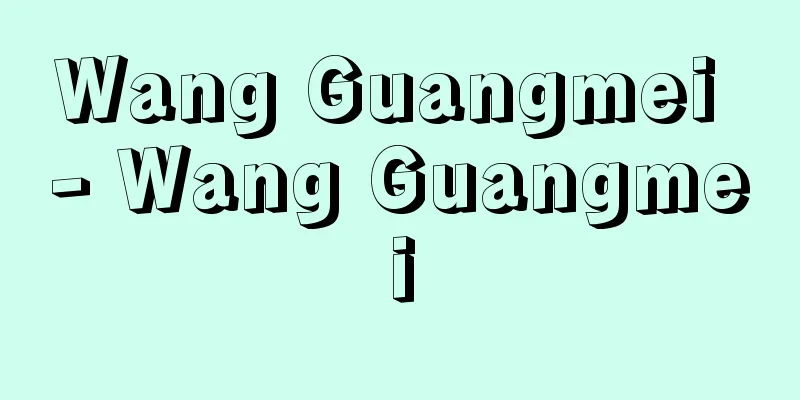Magazine - Zasshi

|
A temporary bound, booklet-style publication that is published periodically, one issue at a time. Originally composed by collecting various articles and records according to a set editorial policy, many also include illustrations, photographs, and cartoons. In English, magazines are also called magazines or journals, but the origin of the Japanese word magazine originally meant a storehouse, and it seems that Western scholar Yanagawa Shunzo began to use the term magazine, which means "storehouse of knowledge." It is a term unique to Japan, even in countries that use Chinese characters. In Chinese, the more common usages are "monthly report" and "weekly report." [Hitoshi Suzuki and Norio Tamura] originToday's magazines date back to the book catalogs that booksellers provided to book lovers in England and France in the 17th century. The Journal des Sabins, an independent periodical first published in Paris in 1665, contained summaries of books, lists of works by authors, and reports on fields such as philosophy, literature, and science. In the same year, the Royal Society newsletter, Philosophical Transactions, was launched in London in imitation of the Journal. At the same time, magazines were born in Germany and other regions where civil society had been established, and developed as a periodical medium different from newspapers. It is said that the prototype of today's magazines in Japan was Seiyo Zasshi, first published by the aforementioned Shunzo Yanagawa in 1867 (Keio 3). It was a woodblock-printed pamphlet of about 10 sheets of Minogami paper, mainly translations of Dutch magazines on natural science, history, culture, and other topics, with original articles added. The emergence of modern periodicals in China, which has a long history of writing and paper, was surprisingly recent, with the 1815 publication of the Chashishu Monthly Tongji Zhuan, a monthly bulletin that was both a newspaper and a magazine. [Hitoshi Suzuki and Norio Tamura] kindsThe mainstream publishers and formats of magazines currently published regularly in Japan are as follows: (1) Publishing entities Magazine publishing business is dominated by magazine publishers, book publishers, and newspaper companies, but there are also a great many other publishers, including government agencies, general companies, organizations, and universities. (2) By size: B5 for weekly magazines, A5 for monthly magazines, B6, A3, B4, etc. However, there is a tendency for magazines to become larger and sometimes have different sizes in order to increase their appeal in stores. (3) By publication frequency, they can be classified into weekly, seasonal, biweekly, monthly, bimonthly, quarterly, and yearly. (4) By readership and content In addition to general magazines, women's magazines, literary magazines, popular entertainment magazines, children's magazines, and magazines for each grade level, there are specialized magazines in a wide range of fields, and there are also magazines that do not appear in the statistics, such as various yellow pages (telephone directories, address books), company newsletters, PR magazines, catalog magazines, doujinshi, club magazines, and town information magazines. In the 2000s, various catalog magazines, magazines for mail order sales, and free information magazines for job hunting, real estate, etc. entered the market. There are also many mooks, which are halfway between magazines and books, and with the advent of the IT (information technology) age, electronic magazines on CD-ROMs and other media have also become popular. [Hitoshi Suzuki and Norio Tamura] Japanese magazinesAfter the aforementioned Seiyo Zasshi, in 1874 (Meiji 7), enlightened critical magazines such as Min'in Zasshi (Minmin Zasshi) by Fukuzawa Yukichi and others, and Meiroku Zasshi (Meirokusha's journal), were launched. The period of enlightenment and rise came to an end with the launch of many specialized magazines, including the humorous satirical entertainment magazine Dandan Chinbun (1877), Houtan Zasshi (1878), the first novel magazine, Tokyo Keizai Zasshi (1879) by Taguchi Ukichi, which aimed to emulate the British Economist, Rikugo Zasshi (1880), a Christian thought magazine by Kozaki Hiromichi, and Jogaku Shinshi (1884), which developed a female readership. However, until around the mid-Meiji period, the boundaries between newspapers and magazines were largely undifferentiated. From the mid- to late Meiji period, magazine-led publishers appeared, and magazines became a commercial medium in their own right. This meant that, unlike the magazines of the Enlightenment period, sufficient profits could be expected from the number of readers and magazine advertising. An increase in readers meant that the conditions for success were met, such as the spread of literacy (the ability to read and write) through the attainment of general education, the emergence of urban wage earners who could purchase magazines, and the spread of electric lighting. Thus, publishers who made a name for themselves in the magazine business and spread the influence of popular culture to the people emerged. Kokumin no Tomo (1887), headed by Tokutomi Soho of Min'yūsha, advocated populism and sold tens of thousands of copies at a time when most magazines had circulations of less than 1,000. Hakubunkan is said to be a pioneer of commercial publishing, and based on the success of the digest magazine Nihon Daika Ronshu (1887), it launched many magazines, including the full-scale general magazine Taiyo (1895), and built a magazine empire. Jitsugyo no Nihonsha published Jitsugyo no Nippon (1897) and other titles to compete with Hakubunkan, and won by adopting a consignment system that allowed free returns and bold advertising activities. Hanseikai Zasshi, first published in 1887, was renamed Chuokoron in 1899, and later became a representative general magazine under the editor-in-chief of Takita Choin. From the Taisho to the early Showa era, mass publishing was established through reforms in printing technology and distribution, and women's and home magazines such as Fujin Koron (1916) and Shufu no Tomo (1917, renamed Shufu no Tomo in 1954) flourished. Later, Dainihon Yubenkai Kodansha (later Kodansha), which built an unprecedented magazine empire with nine major magazines, built its base with both the hard-line magazine Yuben, which originated from the Tokyo Imperial University Debate Club, and the somewhat softer magazine Kodan Club, as its name suggests, and went on to publish magazines in all fields, forming the prototype of Japanese commercial magazine journalism. Kodansha's Shonen Club (1914) and other magazines, especially King (1925), which was launched with the catchphrase "interesting and informative," achieved a circulation of 1.5 million copies. On the other hand, in opposition to Chuokoron, which centered its argument around Yoshino Sakuzo, the standard-bearer of Taisho democracy, general and literary magazines such as Kaizo (1919), which raised the flag of Marxism, and other socialist and proletarian magazines were published one after another. This was the beginning of the culture of general magazines, which is unique to Japan. The first general weekly magazines, Shukan Asahi (Shunkan Asahi when launched in February) and Sunday Mainichi, were launched in April 1922 (Taisho 11), and magazines for boys and girls such as Shogaku Go-nensei (Shogaku Rokunensei) and Shogaku Rokunensei (Shogaku Rokunensei) (both 1922), which broadened their reach beyond learning and education to the home, were established. Bungeishunju (1923) and Ie no Hikari (Ie no Hikari) (1925) were also launched. The Manchurian Incident of 1931 (Showa 6) led to an increase in the banning of magazines, and as the Second World War approached, the government intensified its crackdown on freedom of speech and increased state control over publishing, forcing magazines such as Chuokoron and Kaizo to close, and the authors and editors associated with these general magazines were arrested in a fabricated case by the authorities. Many popular magazines were made to cooperate with national policy, playing a role in encouraging militarism and encouraging women to be good wives and wise mothers. After the Second World War, with the restoration of freedom of speech and publishing, many magazines were relaunched and launched. In 1945 (Showa 20), the general magazine Shinsei was launched, followed the following year by Sekai, Tenbo, Sekai Hyoron, Choryu, and Shiso no Kagaku. Together with the revived Chuokoron, Kaizo, and Nihon Hyoron, they formed a new forum with a broad range of democratic and socialist themes. During this time, there was a severe shortage of paper, and capital from other industries with the necessary resources entered the publishing world one after another. The Japanese version of Reader's Digest (1946), which received a special allocation of paper from GHQ (Supreme Commander for the Allied Powers), had a circulation of over 1.5 million copies, and influenced postwar Japanese journalism. Other new style magazines also appeared, such as the popular entertainment magazine Heibon (1945), the intermediate novel magazine Shosetsu Shincho (1947), and the lifestyle magazine Kurashi no Techo (1948). For a short period after the Second World War, the rags of pornography bloomed like ugly flowers, dealing with reading material and topics related to adultery. Although they were often described as erotic or grotesque, they symbolized the consciousness of the Japanese people, who had been liberated from oppression. Ten years after the war, many of the magazines that had been launched were eliminated due to the interference of GHQ and the end of inflation, and the next era began. In 1956 (Showa 31), publishing capital entered the world of weekly magazines, with "Weekly Shincho" being the first issue, marking the beginning of the era of weekly magazines. General magazines "Weekly Bunshun" and "Weekly Gendai" (both in 1959), women's magazines "Weekly Josei" (1957) and "Josei Jishin" (1958), popular magazines "Weekly Myojo" (1958) and "Weekly Heibon" (1959), as well as boys' manga magazines "Shonen Magazine" and "Shonen Sunday" (both in 1959), discovered new readership, and weekly magazines became established as the mainstream of the magazine world from the 1960s onwards. Monthly general magazines, which had been opinion leaders until the 1960 Security Treaty protests, gradually lost their influence with the end of the "postwar" period and the emergence of mass society. Instead, general magazines published by capital different from that of traditional publishers, such as "Ushio" (1960) and "Gendai no Me" (1961), briefly appeared in this field. It captured the attention of some students and intellectuals, and together with Asahi Journal, which was launched in 1959, it led the intellectual world until the Security Treaty protests of 1970. Calling itself a "national magazine," Bungeishunju gained a wide readership with its focus on non-fiction that appealed to human interest, and broke the mold of traditional general-purpose magazines. As the Security Treaty issue came to an end, the shadow of the general-purpose magazine gradually faded, and people's consciousness and style became more diverse and scattered. This coincided with the rapid growth of the Japanese economy, and readers' interests shifted from ideas, culture, and society to business, homes, leisure, and hobbies. Four women's magazines, Shufu no Tomo, Fujin Club, Fujin Seikatsu, and Shufu to Seikatsu, which were practical household magazines for housewives, also fell into disuse as women entered the workplace. With the emergence of BG (business girls, later known as OL (office ladies)) and housewives with working experience, the magazines shifted to graphic magazines focusing on fashion and leisure, such as anan (1970) and non-no (1971), and new family magazines Croissant and MORE (both 1977) aimed at the baby boom generation (those born around 1948 during the baby boom). This was also a trend towards larger magazines and more visual in the age of television. Men's magazines were born to target the young market, which was between the boys' and girls' generation and the adult generation, and created the so-called "gekiga generation" with its focus on cars, fashion, music, sex, manga, and gekiga. "Heibon Punch" (1964) and "Weekly Playboy" (1966) led the way in the adult entertainment industry for young men, while the unique mini-magazine "Hanashi no Tokushu" (1966), "Takarajima" (1973), which advocated a new lifestyle, and "POPEYE" (1976), which was well-received for its articles focusing on the adult entertainment industry on the West Coast (the American West Coast) and drew attention with its vertical layout, created the prototype for graphic magazines aimed at young people in their late teens and early twenties. The town information magazine "Pia" (1972) and the parody magazine "Bikkuri House" (1974) also created unique pages that spawned similar magazines of the same type. In the 1980s, the publishing world added new types of popular magazines to the market, moving from the "age of books" to the full-fledged "age of magazines." Magazines were diversified according to the interests of readers, genres, classes, and age groups, with the continuation of popular science magazines such as Newton (1981), the launch of the luxurious sports magazine Sports Graphic Number (1980), the general digest magazine Da Capo (1981), the magazine for mature readers Shincho 45+ (1982), and the high-end economics magazine for businessmen NEXT (1984). This was no exception in the successive launches of women's magazines. This trend was not limited to the publishing world, and it was said that the world was changing from the "masses" era to the "fragmented" and "small" era. Among these were the graphic magazine FOCUS (1981) and its successor FRIDAY (1984), which were new visually appealing magazines. They skillfully handled scandalous themes and captured the interest of both male and female readers, with circulations exceeding 2 million at their peak. They even gave birth to catchphrases such as "to focus and to be focused" and "the focus phenomenon," and the photo pages of various popular magazines began to imitate this technique. However, this scandalism also began to go too far, and problems arose due to the rise of privacy consciousness and public criticism, and it began to decline in the 21st century. In the 1990s, information magazines, which had started to emerge in the 1980s, reached their peak. Originally originating from local town magazines in regional cities, information magazines began to find business opportunities in a variety of fields, including Pia, job offers, part-time jobs, housing, product catalogs, TV guides, discount travel tickets, and weddings, amid a nationwide trend of post-ideological, declining thinking, and "information-oriented" Japan. However, magazines as a business are always fraught with risk, and many have been closed or discontinued. In 1996, the magazine Shisou no Kagaku (Science of Thought) ceased publication after 50 years since its founding, and the traditional Chuokoron magazine was spared from closure when Chuokoron-Shinsha became a subsidiary of the Yomiuri Shimbun in 1999. FOCUS also ceased publication in 2001 (Tokyo Keizai University has a huge collection of the first issues of this magazine, which has seen many ups and downs). Entering the 2000s, a turning point was seen in magazine publishing due to Japan's globalization, the spread of IT, and the emergence of new social issues such as economic instability, an aging population, and a declining birthrate. Many well-known American economic, fashion, science, and news magazines were published in Japanese. These magazines include National Geographic, Newsweek, and Money. The quality of these magazines is high, and they have had a certain influence on Japanese culture and education. Magazines aimed at improving health, the environment, safety, and quality of life have also been produced. [Hitoshi Suzuki and Norio Tamura] Magazine writerGeneral magazines before World War II were opinion journalism led by academic writers, known as the "opinion circle." This trend continued after World War II, but as weekly magazines came to dominate the magazine scene, specialized reporters and columnists appeared, and the segmentation of magazines gave rise to a variety of specialized critics. Those who emerged on the stage of general magazines were Noguchi Hajime and Murakami Ichiro, who continued to serialize reportage in "Nihon Hyoron" immediately after the war, and then the trio of "Chuokoron," Fujishima Udai, Murakami Hyoe, and Maruyama Kunio. Those who came from weekly magazines were Kusayagi Daizo, Kajiyama Toshiyuki, Inoue Mitsuharu, and Takenaka Ryou, and "Bungei Shunju" produced non-fiction writers, including reporters, by establishing the Oya Non-Fiction Award, starting with Tachibana Takashi. This was the case for Suzuki Akira and Sawaki Kotaro, but by opening up many pages to other writers, such as Yanagita Kunio, Tahara Soichiro, Kakuma Takashi, and Konaka Yotaro, all of whom came from radio journalism, and Honda Yasuharu, Uemae Junichiro, and Naito Kunio, all of whom came from newspaper journalism, the magazine nurtured the pioneers of the so-called new journalism. A unique example was the magazine Shiso no Kagaku (Science of Thought), which became a gateway for problem-conscious writers, regardless of gender, educational background, or ideology. Uesaka Fuyuko, Ohno Chikara, and Shimane Kiyoshi are just a few examples. After that, a new generation of writers appeared, including Satoshi Kamata, who wrote a series of reports on the labor force in the automobile industry, Tadayoshi Kamata, who focused on migrant workers, Natsuo Sekigawa, who dug up the Japan-Korea issue, Naoki Inose, who approached the national issues of Japan, such as the Emperor System, from a novel perspective, and Kazuma Yamane, who wrote in a variety of fields, including biographical reports, Amazon, and electronic technology. There was also a remarkable rise in female writers. Some of them were Hisada Megumi, who looked into the poverty of Japan, and Mayumi Mori, who was an unusual case of a town magazine editor. However, this trend also changed in the late 20th century, as information magazines became more powerful, many freelance writers who collected information and data joined the ranks of writers who used opinions as their weapon. Some people who graduated from university during the recession chose to work as freelancers right away, which could be said to be a sign of the times. However, there are some differences between Japanese writers and foreign writers and reporters. Most American writers are generally well-educated, especially those who have graduated from journalism schools at universities or graduate schools. At university, they have already undergone educational curriculum, training, and internships aimed at becoming a journalist, and while they are students, they have always participated in writing, interviewing, editing, etc. for campus magazines and little magazines. In their contact with the business world, it is compulsory to be a member of a voluntary association, guild, or professional organization for writers. After graduating, they start out working for local magazines and industry magazines, and when their writing skills, interviewing ability, and planning ability are recognized, they move to magazines in big cities, and ultimately aim to work in New York or Washington, the kingdom of magazine journalism. It is not a matter of whether they are a staff reporter or a freelance writer, but rather what topics they are familiar with and whether they can produce excellent articles. Society also expects such upward mobility in positions. Their activities are backed by the high level of education, knowledge, skills, and networks of journalists, as well as strict professional ethics and a sense of social responsibility as journalists. These professional associations are always on the lookout for freedom of speech and professional ethics, and any violations are punished with public disclosure of names and expulsion. On the other hand, they back up journalists against any unjust interference by the state or other authorities in their affairs, and they also publish journals and yearbooks (writers' markets) that introduce jobs to support the livelihoods of journalists and publicize standards for manuscript fees. In contrast, in Japan, there is a lack of specialized journalism education at universities, underdeveloped professional associations for journalists, and a lack of research into the aptitude, qualifications, and abilities of journalists, and the market for journalism across companies (magazine publishers) is small. These factors make journalists' incomes unstable. [Hitoshi Suzuki and Norio Tamura] World MagazinesAmerican magazines stand out from other countries in terms of variety and overwhelming circulation, but they also play the role of a national media in the country and have a great influence on overseas magazines. Their evolution is also the history of the rise and fall of modern magazines. In the early days, they were merely rehashes of British and European magazines, but after the Civil War, with the rapid maturation of capitalism, they began to be recognized as a social function as an advertising medium for mass-produced products. With the development of printing technology and the introduction of preferential treatment for magazine mailing, the total number of magazines gradually increased, and some magazines began to cover the entire country. In 1893, Muncy, the publisher of Muncy's Magazine, increased the circulation from 40,000 to 500,000 a year and a half later by setting a price below the production cost, and based on this publication record, he succeeded in obtaining huge advertising revenues, and in terms of editorial aspects, he aimed broadly at the general public, thus opening the curtain on American journalism. Muncy's revolutionary advertising acquisition system influenced other magazines, and with the Ladies' Home Journal as the first, magazines began to achieve sales of one million copies. From the 1920s onwards, the era of mass magazines dependent on advertising continued, and new magazines appeared, but in the mid-1950s, the rapid spread of commercial television as a new medium took over the advertising market, and Collier's and Saturday Evening Post were forced to close due to their inability to keep up with rising production costs, improved educational standards and diversifying interests. Life, which aimed to acquire subscribers comparable to television viewers, significantly reduced annual subscription fees, but although its circulation grew to 8.5 million copies, it ran into difficulties due to advertisers' claims that subscription subscriptions did not lead to an increase in readership, and increases in magazine postage fees, and it eventually closed down along with the similar magazine Look. The mainstream of magazines changed from general interest to special interest, and publishing management also shifted from a model dependent on advertising revenue to a model dependent on sales revenue with an emphasis on partial sales. At the end of the 20th century, there were quite a few huge magazines in the United States with circulations of 10 million copies per issue. This is due to differences in distribution systems, such as the fact that Japan places emphasis on retail sales at bookstores, kiosks, and convenience stores, while America has traditionally placed emphasis on subscriptions by mail for a year (or for several years), and that large discounts are offered to subscription subscribers. Representative examples of this subscription system include Reader's Digest, TV Guide, and National Geographic. In the UK, there are many magazines with a long history, and high-quality magazines such as The Economist and Vogue, and humor magazine Punch are well known, but they do not have large circulations. Magazines with large circulations include Sunday (a newspaper insert) with around 4 million copies, and radio and television program magazines, but there are no news magazines with large circulations like those in the US. This is probably because there are large newspapers in big cities. In France, news magazines such as L'Express, Le Point, and Le Nouvelle Observateur, graphic magazine Paris Match, and high-end fashion magazine Elle are doing well, but their circulations are not growing. In Germany, the most influential magazine Der Spiegel, the world's largest graphic weekly magazine Stern, Geo, which focuses on humans and nature, and the women's magazine Brickette, which has the longest tradition, are well-known. In Russia, the unique satirical cartoon magazine Krokodil, the digest magazine Sputnik, the pictorial magazine Ogonyok, and the politically focused Ittogi are being published, but their popularity is declining. In China, most magazines were discontinued during the Cultural Revolution, but some were relaunched or relaunched after the downfall of the Gang of Four. Unlike a liberal society, China is under strict control of the government's General Administration of Press and Publication and the Communist Party, and the founding and publication of magazines themselves requires a license. In addition, the allocation of magazine paper is controlled, so publication is not easy. However, since Deng Xiaoping's "reform and opening up" policy, the capitalistization of the economy has led to increased business activity, and with the growing desire of the people to improve their lives, the magazine media has had to keep up. According to government announcements, the number of magazines has increased from just 21 in 1970 to approximately 10,000 in 2007. Magazines on themes of business, lifestyle, fashion, and customs have sprung up all over the country, but magazines dealing with politics and social issues are still not permitted. Magazines such as the politically-focused Beijing Weekly are under the control of the Party. Other "commercial magazines" are constantly on the verge of being discontinued or stopped publication. Nevertheless, the popular popular film magazine Popular Film, the family magazine Mother and Baby World, and the merchant-oriented Commercial Culture are still being published. [Hitoshi Suzuki and Norio Tamura] "American Editors" by Tokiwa Shinpei (1980, Shueisha)" ▽ "The Age of Magazines" by Ozaki Hideki and Munetake Asako (1979, Shufunotomosha)" ▽ "Japan's Little Magazines" by Tamura Norio (1992, Shuppan Newssha)" ▽ "American Magazines" by Kanehira Seinosuke (1993, Nihon Keizai Shimbun)" ▽ "100 Years of Magazine History: Reading the Trends of Magazines Born and Rising and Falling with the Times, 1874-1990" by Shiozawa Sanenobu (1994, Green Arrow Publishing)" ▽ "The Golden Age of Magazines in the 20th Century" by Aramata Hiroshi (1998, Heibonsha)" ▽ "The Age of the 'Kings': The Public Nature of Popular Magazines" by Sato Takami (2002, Iwanami Shoten) " ▽ "American Magazines as Told by Data" by Kuwana Junji (2002, Futosha) "People Who Led American Magazines" by Kuwana Junji (2003, Futosha) " ▽ "American Magazines Compete with Their Covers" by Kuwana Junji (2004, Futosha)" ▽ "Newspapers, Magazines, and Publishing" edited by Yamamoto Taketoshi (2005, Minerva Shobo) ▽ "Research on Hong Kong Information" by Mori Kazumichi (2007, Fuyo Shobo Publishing) [References] | | | | | | | | | | | | | | | | | | | | | | | | | | | Tachibana Takashi| | | | | | Journalism| | Match| | | | |Dandan | | | | | | | | |Source: Shogakukan Encyclopedia Nipponica About Encyclopedia Nipponica Information | Legend |
|
定期的に号を追って刊行される仮綴(かりと)じ、冊子形態の出版物。種々の記事・記録を一定の編集方針のもとに集めて構成したものを原型とし、挿絵、写真、漫画などが加わるものが多い。英語で雑誌のことをマガジンmagazine、ジャーナルjournalともいうが、日本語の雑誌の起源はもともと倉庫を意味し、「知識の庫(くら)」の意のマガジンから洋学者の柳河春三(やながわしゅんさん)が雑誌とよぶようになったようである。漢字圏でも日本独特の用語である。中国語では、「月報」「周報」の使い方が一般的である。 [鈴木 均・田村紀雄] 起源今日の雑誌の起源は、17世紀にイギリスやフランスで本屋が愛書家たちに提供した書物カタログにさかのぼる。1665年独立した定期刊行物としてパリで創刊された『ジュルナール・デ・サバン』は、本の要約や作家の作品リスト、哲学、文学、科学などの分野の報告からなっていた。同年、それを模倣してロンドンでロイヤル・ソサイエティー(イギリス学士院)会報『フィロソフィカル・トランザクション』が創刊された。同時期、ドイツその他市民社会が成立した地域で雑誌が誕生し、新聞とは異なった定期刊行物のメディアとして発展していく。日本で今日の雑誌の原型となったのは、前述の柳河春三が1867年(慶応3)に創刊した『西洋雑誌』といわれる。自然科学、歴史、文化などオランダの雑誌からの翻訳を中心に、独自の記事も加えた美濃紙(みのがみ)半裁十数葉で、木版刷りの小冊子であった。文字と紙の歴史の古い中国の近代的な定期刊行物の出現は意外に新しく、1815年の『察世俗毎月統記伝』という新聞と雑誌の未分化な月報であった。 [鈴木 均・田村紀雄] 種類現在日本で定期的に発行されている雑誌の発行主体や判型等の主流は、以下のとおりである。 (1)発行主体 雑誌専門出版社、図書出版社、新聞社による雑誌発行が雑誌出版ビジネスの中心だが、これ以外にも、官公庁、一般企業、団体、大学等の発行元は非常に多い。 (2)判型別 週刊誌を中心としたB5、月刊誌を中心としたA5、そのほかB6、A3、B4などとなっているが、店頭での訴求力の増強をねらって、大型化、ときに変形の傾向もある。 (3)発行周期別 週刊、旬刊、隔週刊、月刊、隔月刊、季刊、年刊に分類できる。 (4)読者、内容別 総合誌、女性誌、文芸誌、大衆娯楽誌、児童誌、学年別誌などのほか多分野にわたる専門誌があり、統計に現れないもので、各種イエローページ(電話帳、住所録)、社内報、PR誌、カタログ誌、同人誌、サークル誌、タウン情報誌などが加わる。2000年代には、各種カタログ雑誌、通信販売用の雑誌、求人・不動産などの無料情報誌が参入してきた。また雑誌と書籍の中間をいくムックmookも多く、IT(情報技術)時代を迎えてCD‐ROMなどによる電子雑誌も拡大してきた。 [鈴木 均・田村紀雄] 日本の雑誌前出の『西洋雑誌』ののち、1874年(明治7)には福沢諭吉(ゆきち)らによる『民間雑誌』、明六社(めいろくしゃ)の機関誌『明六雑誌』などの啓蒙(けいもう)的評論誌が創刊された。滑稽(こっけい)風刺娯楽誌『団団珍聞(まるまるちんぶん)』(1877)、小説雑誌の始祖『芳譚(ほうたん)雑誌』(1878)、イギリスの『エコノミスト』を目ざした田口卯吉(うきち)の『東京経済雑誌』(1879)、小崎弘道(こざきひろみち)のキリスト教思想誌『六合(りくごう)雑誌』(1880)、女性読者を開拓した『女学新誌』(1884)そのほか多くの専門誌が創刊されて啓蒙と勃興(ぼっこう)の時期が終わる。しかし、明治中期ぐらいまで、新聞と雑誌の領域はかなり未分化であった。 明治中期から末期にかけて、雑誌主導型の出版社も出現するなかで、雑誌が独自の商業的メディアになってゆく。これは、啓蒙期の雑誌と異なり、十分な利益が見込める読者数と雑誌広告の確立を意味した。読者の増加ということは、普通教育の達成による文字リテラシー(読み書き能力)の普及、雑誌を購入することのできる都市の賃金労働者の出現、電灯の普及などの要件が整ったのである。かくて、雑誌ビジネスとして名を残し、国民に大衆文化の影響を広める出版社が輩出する。民友社徳富蘇峰(そほう)主宰の『国民之友』(1887)は、平民主義を掲げ、ほとんどの雑誌の発行部数が1000部以下であった当時、万単位の売れ行きを示した。博文館は商業出版の先駆といわれ、ダイジェスト誌『日本大家論集』(1887)の成功を基に本格的な総合誌『太陽』(1895)をはじめ多くの雑誌を創刊し、雑誌王国を築いた。実業之日本社は『実業之日本』(1897)ほかを発刊して博文館に対抗し、販売面での返品自由の委託制度の採用、思い切った宣伝活動などによって勝利を収めた。1887年創刊の『反省会雑誌』は、99年『中央公論』と改題し、その後滝田樗陰(ちょいん)編集長のもと代表的な総合誌となっていく。 大正から昭和初期にかけては、印刷技術や物流の改革により大量出版が確立し、『婦人公論』(1916)、『主婦之友』(1917。1954年『主婦の友』と改題)といった女性・家庭誌の隆盛がみられた。のちに、九大雑誌で空前の雑誌王国を築いた大日本雄弁会講談社(後の講談社)は、その名のとおり、東京帝国大学弁論部に端を発した『雄弁』という硬派の雑誌と、『講談倶楽部(くらぶ)』というやや軟らかい雑誌の双方で基盤を築き、あらゆる分野の雑誌に手を出してゆく、日本の商業雑誌ジャーナリズムの原形がつくられたと考えられる。この講談社の『少年倶楽部』(1914)ほかの雑誌群、なかでも「面白くて為になる」のキャッチ・フレーズで創刊された『キング』(1925)は150万部の発行実績をあげる。一方、大正デモクラシーの旗手吉野作造を主軸にして論陣を張った『中央公論』に対抗して、マルクス主義の旗を掲げた『改造』(1919)や、そのほかの社会主義誌、プロレタリア誌などの総合、文芸誌が続出した。日本独特の総合雑誌という文化の萌芽(ほうが)がここにある。1922年(大正11)4月最初の週刊総合誌『週刊朝日』(2月の創刊時は『旬刊朝日』)、『サンデー毎日』が同時期にスタートし、『小学五年生』『小学六年生』(ともに1922)など、学習と教育だけでなく家庭まで裾野(すその)を広げた少年・少女向け雑誌が成立、また『文芸春秋』(1923)、『家の光』(1925)も創刊された。1931年(昭和6)の満州事変を機に雑誌の発禁処分が増え、第二次世界大戦に入る過程で言論弾圧の強化、出版の国家統制が進み、『中央公論』『改造』などが廃刊に追い込まれ、権力のデッチ上げによって、これら総合誌に関係ある著者、編集者が検挙された。大衆向け雑誌の多くは国策に協力させられ、軍国精神の鼓舞、良妻賢母の勧めの役割を果たした。 第二次世界大戦後、言論出版の自由の回復とともに復刊、創刊が相次いだ。1945年(昭和20)総合誌『新生』、ついで翌年『世界』『展望』『世界評論』『潮流』『思想の科学』などが相次いで創刊され、復刊した『中央公論』『改造』『日本評論』などとともに、民主主義を基調とする社会主義までの幅をもつ新しい論壇を形成した。この時期用紙不足が厳しく、資材をもった異業種資本が出版界に続々と進出する。GHQ(連合国最高司令部)から用紙の特別割当てを受けた『リーダーズ・ダイジェスト』日本語版(1946)は発行部数150万部を超え、戦後日本のジャーナリズムに影響を与える。そのほか大衆娯楽誌『平凡』(1945)、中間小説誌『小説新潮』(1947)、生活誌『暮しの手帖(てちょう)』(1948)など、新しいスタイルの雑誌も登場する。第二次世界大戦後のわずかな期間、あだ花のように咲いたカストリ雑誌は、読み物、風俗を扱い、エロ・グロといわれながらも、抑圧から解放された日本人の意識を象徴していた。戦後10年、創刊された多くの雑誌は、GHQの干渉、インフレの収束によって淘汰(とうた)され、次の時代に移る。 1956年(昭和31)、週刊誌の世界に出版資本が進出、『週刊新潮』はその第一号だが、これを機に週刊誌の時代が始まる。総合誌『週刊文春』『週刊現代』(ともに1959)、女性誌『週刊女性』(1957)、『女性自身』(1958)、大衆誌『週刊明星』(1958)、『週刊平凡』(1959)、さらに少年漫画誌『少年マガジン』『少年サンデー』(ともに1959)などが新しい読者層を発掘、続く1960年代以降の雑誌界の主流として週刊誌が定着する。60年安保闘争のころまでオピニオン・リーダーたりえた月刊総合誌も、「戦後」が終わり、大衆社会の出現とともにしだいに影響力を失っていく。かわってこの分野に『潮(うしお)』(1960)、『現代の眼(め)』(1961)といった従来の出版社とは異質な資本によって刊行される総合誌が一時現れた。一部学生、インテリ層をとらえ、1959年創刊の『朝日ジャーナル』などとともに70年安保闘争までの思想界をリードする。『文芸春秋』は「国民雑誌」と称し、ヒューマン・インタレストに訴えるノン・フィクション中心の編集で、幅広い読者層を獲得して、伝統的な総合雑誌の型を破っていく。安保問題の終息とともに総合雑誌の影はしだいに色褪(あ)せ、人々の意識、スタイルも多様化、散漫化し、日本経済の高度成長と重なり、読者の関心は思想、文化、社会からビジネス、マイホーム、レジャーや趣味に移ってゆく。 主婦向け家庭実用雑誌であった『主婦の友』『婦人倶楽部』『婦人生活』『主婦と生活』の女性4誌も、女性の職場への進出によって地盤沈下し、BG(ビジネスガール。のちに通称がOL(オフィスレディ)に変わる)、ないし働いた経験をもった主婦層の出現により、ファッション、レジャーを中心とするグラフ誌『anan(アンアン)』(1970)、『non・no(ノンノ)』(1971)、団塊の世代(ベビーブームの1948年前後生まれ)を対象にしたニュー・ファミリー誌『クロワッサン』『MORE(モア)』(ともに1977)などへと移行する。これは同時にテレビ時代下の雑誌としての大型化、視覚化の流れでもあった。少年少女世代と成人世代の中間にあるヤング市場を志向して、男性雑誌が生まれ、カー、ファッション、ミュージックにセックス、漫画に劇画のいわゆる「劇画世代」をつくりだす。『平凡パンチ』(1964)、『週刊プレイボーイ』(1966)が若い男性の風俗をリードし、ユニークなミニ・マガジン『話の特集』(1966)、新しいライフスタイルを提唱した『宝島』(1973)、ウェストコースト(アメリカ西海岸)の風俗中心の記事で受け、「タテ割り」のレイアウトで目を引いた『POPEYE(ポパイ)』(1976)は、10代後半から20代前半の若者対象のグラフ誌の原型をつくった。タウン情報誌『ぴあ』(1972)、パロディー誌『ビックリハウス』(1974)も同型の類似雑誌を生み出すユニークな誌面を創出した。 1980年代に入って、出版界は、従来の雑誌界にはみられなかった種類の大衆誌を市場に加えて、「本の時代」から本格的な「雑誌の時代」へと入っていく。『Newton(ニュートン)』(1981)をはじめとする自然科学系大衆誌の続刊、豪華スポーツ誌『Sports Graphic Number』(1980)の発刊、総合ダイジェスト誌『ダカーポ』(1981)、熟年雑誌『新潮45+』(1982)、ビジネスマン向け高級経済誌『NEXT』(1984)など、雑誌は読者の興味により、ジャンル別、階層別、年齢層に応じて多様な展開をみせ、それは女性雑誌の相次ぐ創刊誌においてもまた例外ではなかった。こうした傾向は、出版界に限られなかったから、世は「大衆」の時代から「分衆」「少衆」の時代に変貌(へんぼう)しつつあるといわれた。そのなかで視覚に訴える新しい雑誌として、グラフィック・マガジンの『FOCUS(フォーカス)』(1981)や、あとに続いた『FRIDAY(フライデー)』(1984)があった。スキャンダラスなテーマを上手に扱って、男女共通の読者を把握し、最盛期は発行部数200万部を超し、「フォーカスする、される」「フォーカス現象」という流行語をも生み出し、各種大衆誌の写真ページが一斉にこの手法をまねるようになった。しかし、このスキャンダリズムも、過激に走りすぎたり、プライバシー意識の台頭、世論の批判もあって問題を投げかけて、21世紀になると下降に向かう。 1990年代に入ると、1980年代に芽生え始めた情報誌が全盛を迎える。もともと地方都市のタウン誌に源流があったが、日本全体の脱イデオロギー、思想の低下、「情報化」のなかで、『ぴあ』をはじめ求人、アルバイト、住宅、商品カタログ、テレビガイド、安売り旅行券、ブライダルなどあらゆる分野に、情報誌がビジネス機会をみつけだすことになる。しかし、ビジネスとしての雑誌事業は、つねにリスクがつきまとい、終・廃刊も多い。1996年に雑誌『思想の科学』が創刊50年目にして終刊、また伝統のある『中央公論』は、99年に中央公論社が読売新聞の系列に入ることによって休刊を免れた。また、『FOCUS』は2001年休刊となった(この浮沈の激しい雑誌の膨大な創刊号コレクションが東京経済大学に所蔵されている)。 2000年代に入ると、日本のグローバル化、IT化、さらに経済の不安定、高齢化、少子化など新しい社会問題の台頭により、雑誌出版にも潮目がみられることになる。多くの著名なアメリカの経済雑誌、ファッション雑誌、科学雑誌、ニュース雑誌の日本語版の発行である。『ナショナル・ジオグラフィック』『ニューズウィーク』『マネー』などである。これらの雑誌は水準が高く、日本の文化、教育に一定の影響を残している。また、健康、環境、安全、生活の質の向上を目ざす雑誌が生まれている。 [鈴木 均・田村紀雄] 雑誌ライター第二次世界大戦前の総合雑誌は、論壇といわれるアカデミズム中心の書き手にリードされるオピニオン・ジャーナリズムであった。第二次世界大戦後もその傾向は続いたが、週刊誌が雑誌の主流を占めるにつれて、専門のルポ・ライター、コラムニストが現れ、雑誌のセグメント化が専門の各種評論家を輩出させた。総合雑誌を舞台にして現れたのは、終戦直後の『日本評論』にルポルタージュの連載を続けた野口肇(はじめ)、村上一郎、ついで『中央公論』の三人組、藤島宇内(うだい)、村上兵衛(ひょうえ)、丸山邦男らであり、週刊誌出身者は草柳大蔵、梶山季之(かじやまとしゆき)、井上光晴(みつはる)、竹中労らであり、『文芸春秋』は、立花隆をはじめとして、大宅ノンフィクション賞を設けることによって、ルポ・ライターを含むノンフィクション・ライターを輩出させた。鈴木明や沢木耕太郎らがそうであるが、このほかにも電波ジャーナリズム出身の柳田邦男、田原総一朗、角間(かくま)隆、小中(こなか)陽太郎、新聞ジャーナリズム出身の本田靖春(やすはる)、上前(うえまえ)淳一郎、内藤国夫らにも多くの誌面を開放することによって、いわゆるニュー・ジャーナリズムの旗手たちを育成した。変り種は雑誌『思想の科学』で、男女、学歴、イデオロギーを問わず問題意識をもった書き手の登竜門になった。上坂冬子、大野力、しまねきよしは、その一例である。その後、一連の自動車工業労働をルポでとりあげた鎌田慧(さとし)、出稼ぎに焦点をあてた鎌田忠良(ただよし)、日韓問題を掘りおこした関川夏央(なつお)、斬新(ざんしん)な切り口で天皇制など日本という国の問題にアプローチしている猪瀬直樹、人物ルポ・アマゾン・電子技術など多方面で執筆した山根一眞(かずま)ら新しい世代が現れる。また女性のライターの台頭も著しい。日本の貧困の側面をついた久田恵、タウン誌編集者という変わり種の森まゆみをあげておく。しかし、この傾向も、20世紀の終盤には、情報誌が強大になるにつれ、オピニオンを武器としたライターに対して、情報、データを集めるタイプのフリーランスのライターが多数加わってきた。不況のなかで大学を卒業したもののなかには、いきなりフリーランスの仕事を自ら選びとるものもおり、時代の流れといえよう。 ただ、日本の「物書き」と海外のライター、レポーターとの間には、いくぶんの相違がある。アメリカのライターの多くは、高い学歴、とくに大学または大学院でジャーナリズム・スクールを卒業したものが基本である。大学ですでにジャーナリストを目ざす教育カリキュラム、訓練、インターンシップを経験しており、学生時代に学内雑誌、リトルマガジンに執筆、取材、編集等にかならず参加してきている。その実業との接点のなかで、ライターの自主的団体、ギルド、専門機関のメンバーであることが必修条件である。彼らは、卒業して、地方の雑誌、業界専門雑誌から出発し、その筆力、取材能力、企画力を認められて大都市の雑誌に移り、最終的には、雑誌ジャーナリズムの王国ニューヨークやワシントンでの仕事を目ざす。社員記者かフリーランスライターかが問題ではなく、どのテーマに精通しているか、優れた記事をものにできるかが問われる。このようなポストの上昇移動を社会も期待している。彼らの活動は、ジャーナリストとしての高い教養、知識、技術、ネットワークのほか、厳しい職業倫理、ジャーナリストとしての社会的責任感に裏打ちされている。その職業団体は、つねに言論の自由と職業倫理に目を光らせており、違反に対しては名前の公表、除名などの制裁措置が課せられる。一方では、ジャーナリストへの国家や権力の不当な介入にはバックアップし、またジャーナリストの生活を援護するための仕事の紹介、原稿料の基準など周知する機関誌や年鑑(ライターズ・マーケット)の発行も行っている。それに対して、日本では、大学でのジャーナリスト専門教育の欠落、ジャーナリストの職業団体の未発達、ジャーナリストの適性、資格、能力の研究不足等があり、企業(雑誌出版社)横断的なジャーナリストの仕事(マーケット)は小さい。これらが、ジャーナリストの収入を不安定にしている。 [鈴木 均・田村紀雄] 世界の雑誌アメリカの雑誌は種類の多さと圧倒的な発行部数で他国の雑誌ジャーナリズムにぬきんでているが、国内では全国メディアの役割を果たし、海外雑誌への影響力も大きい。その変遷は近代雑誌盛衰の歴史でもある。初期はイギリスやヨーロッパの雑誌の焼き直しにとどまっていたが、南北戦争後、資本主義の急速な成熟に伴い、マスプロ商品の広告媒体としての社会的機能を認知されるようになった。印刷技術の発達、雑誌郵送に対する優遇措置が講ぜられるに至って雑誌の総数がしだいに増加し、全国をカバーするものがでてきた。1893年『マンシーズ・マガジン』発行人のマンシーは、製作原価を割る定価設定で部数4万を1年半後に50万部に伸ばし、この発行実績を基礎に巨大な広告収入の獲得に成功し、編集面でも広く一般大衆を対象に定め、アメリカン・ジャーナリズムの幕を開いた。マンシーの革命的な広告獲得システムは他誌にも影響を与え、『レディズ・ホーム・ジャーナル』を嚆矢(こうし)として100万部の販売部数を達成する雑誌が出現し始めた。 1920年代以降広告に依存するマス・マガジンの時代が続き、新雑誌も登場するが、50年代なかばにはニューメディアとしての商業テレビの急速な普及によって、広告市場を奪われ、生産費の上昇、教育水準の向上、関心の多様化に対応できず、『コリアーズ』『サタディ・イブニング・ポスト』が廃刊に追い込まれた。テレビ視聴者に匹敵する購読者の獲得をねらった『ライフ』は年間予約料の大幅値下げを行ったが、発行部数を850万部まで伸ばしながら、予約購読者は読者増につながらないとする広告主の主張や雑誌郵送料の値上げなどで行き詰まり、同種の『ルック』とともに休刊するに至る。雑誌の主流はゼネラル・インタレスト誌からスペシャル・インタレスト誌に変わり、出版経営も広告収入依存型から一部売りを重視する販売収入依存型へ移っていく。20世紀末の時点で1号当り1000万部という発行部数をもつ巨大な雑誌がアメリカには少なくない。これは、日本では書店やキヨスク、コンビニエンス・ストアなど店頭販売に重点を置いているのに対し、アメリカでは、伝統的に郵送による年間(または数年間)予約読者に比重があること、また予約読者に大幅な値引きが実施されていることなど流通の仕組みの相違もある。その予約システムの代表が『リーダーズ・ダイジェスト』『TVガイド』『ナショナル・ジオグラフィック』などである。 イギリスでは長い歴史をもつ雑誌が多く、高級誌の『エコノミスト』『ボーグ』、ユーモア誌『パンチ』などがよく知られているが、大部数ではない。発行部数の多い雑誌では、400万部前後の『サンデー』(新聞折込)、ラジオ・テレビ番組誌などあるが、アメリカのような大部数のニュース誌はない。これは大都市に大きな新聞があるためと思われる。フランスではニュース誌『レクスプレス』『ル・ポワン』『ル・ヌーベル・オプセルバトゥール』、グラフ誌『パリ・マッチ』、高級ファッション誌『エル』などが健闘しているが、いずれも部数的には伸び悩んでいる。ドイツではもっとも影響力のある『デア・シュピーゲル』、世界最大のグラフ週刊誌『シュテルン』、人間と自然を主題にした『ゲオ』、もっとも古い伝統をもつ女性誌『ブリキッテ』などが有名である。ロシアではユニークな風刺漫画誌『クロコディール』、ダイジェスト誌『スプートニク』、グラビア誌『アガニョーク』、政治に重点を置いた内容の『イトーギ』などが発行されているが、下降気味である。中国では文化大革命の際大半の雑誌が廃刊されたが、「四人組」失脚後、創刊、復刊されたものもある。自由主義社会と異なり、政府の新聞出版総署と共産党の厳重な統制下にあり、雑誌そのものの創刊、発行が許可制になっている。また雑誌用紙の配分も握られており発行は容易ではない。ただ、鄧小平(とうしょうへい/トンシヤオピン)の「改革開放」路線以降、経済の資本主義化により、企業が活発化し、国民の生活向上意欲の増大で、雑誌メディアもこれに追随しなければならなくなっている。政府の発表では、雑誌は1970年にわずか21種であったものが、2007年には約1万種にもなった。各地でビジネス、生活、ファッション、風俗をテーマにした雑誌が生まれているが、政治や社会問題を扱う雑誌は依然として許可されていない。政治を扱う『北京(ペキン)周報』など党の管理下にある。その他の「商業雑誌」もつねに廃刊、停刊の瀬戸際にある。それでも、人気の高い大衆映画誌『大衆電影』、家庭雑誌『母嬰(ぼえい)世界』、商業家向け『商業文化』などは発行されている。 [鈴木 均・田村紀雄] 『常盤新平著『アメリカの編集者たち』(1980・集英社)』▽『尾崎秀樹・宗武朝子著『雑誌の時代』(1979・主婦の友社)』▽『田村紀雄著『日本のリトルマガジン』(1992・出版ニュース社)』▽『金平聖之助著『アメリカの雑誌』(1993・日本経済新聞社)』▽『塩沢実信著『雑誌100年の歩み――時代とともに誕生し盛衰する流れを読む 1874―1990』(1994・グリーンアロー出版社)』▽『荒俣宏著『20世紀 雑誌の黄金時代』(1998・平凡社)』▽『佐藤卓己著『「キング」の時代――国民大衆雑誌の公共性』(2002・岩波書店)』▽『桑名淳二著『データが語るアメリカ雑誌』(2002・風濤社)』▽『桑名淳二著『アメリカ雑誌をリードした人びと』(2003・風濤社)』▽『桑名淳二著『アメリカ雑誌は表紙で勝負する』(2004・風濤社)』▽『山本武利編『新聞・雑誌・出版』(2005・ミネルヴァ書房)』▽『森一道『香港情報の研究』(2007、芙蓉書房出版)』 [参照項目] | | | | | | | | | | | | | | | | | | | | | | | | | | | | | | | | | | | | | | | | | | | | | | | | | | | |出典 小学館 日本大百科全書(ニッポニカ)日本大百科全書(ニッポニカ)について 情報 | 凡例 |
<<: Magazine advertising - zasshi koukoku
>>: Sassari (English spelling)
Recommend
nomina transcendentia (English spelling) nominatranscendentia
…The history of transcendental theory dates back ...
Min'yakuyakukai - Min'yakuyakukai
This is a work by Nakae Chomin. It is a translati...
Almoz - Almoz
...the phenomenon in which mixed-race children ar...
Azamina - Azamina
...The flower stalks that shoot up in early sprin...
Inquiry - Ukagaisho
A document presented to ask for instructions or op...
Inflammatory polyps
...This type of removal using an endoscope can be...
"The Marriage of Chemistry"
…He played an important role in the Rosicrucian m...
British Association for the Advancement of Science
The purpose of this association was to have scien...
Permanent preparation - Eikyuu Preparato
…To make it possible to store and carry it for a ...
Emperor Xuande
The fifth emperor of the Ming Dynasty in China (r...
Grimaldi, Francesco Maria
Born: April 2, 1618 in Bologna Died December 28, 1...
Osaka Commercial Training School
…A public university with its headquarters in Sum...
Ichijo Fuyuyoshi - Ichijo Fuyuyoshi
Year of death: March 27, 1514 (April 21, 1514) Yea...
cordovan
…It is the third largest city in Andalusia after ...
spam
…This category often includes occupational convul...









